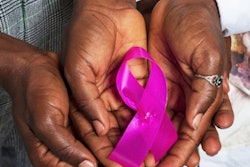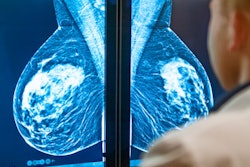
Interventions designed to help underserved and vulnerable women in the U.S. overcome barriers to breast screening are cost-effective, according to a review published on June 18 in JAMA Oncology by researchers from the U.S. Centers for Disease Control and Prevention (CDC).
The review included 30 studies evaluating the effectiveness of programs designed to improve screening rates for breast, cervical, and colorectal cancers by addressing social determinants of health, such as neighborhood environment and economic security.
Interventions designed for breast screening cost an average of $160.10 and resulted in a cost per quality-adjusted life year (QALY) gained of $18,360, an amount significantly better than the traditional cost/QALY gained threshold of $50,000.
"The findings indicate that leveraging social determinants of health to improve screening for breast, cervical, and colorectal cancer is cost-effective for underserved, vulnerable populations in the United States," wrote authors Giridhar Mohan and Sajal Chattopadhyay, PhD, from the CDC's National Center for Environmental Health and the agency's Office of the Associate Director for Policy and Strategy, respectively.
In 2016, the U.S. government redefined its public health policy model to focus on social determinants of health in five key domains: education, economic stability, social and community context, health and healthcare, and neighborhood and built environment.
Some studies have suggested addressing these areas might help to reduce persistent screening disparities for some types of cancers, including breast cancer. But the authors noted that no prior systematic reviews had been conducted on the topic.
The new review included studies published between 2004 and 2019 and contained 94,706 actual participants and 4.21 million simulated ones. The studies used various interventions to address four of the five domains related to social determinants of public health:
- Economic stability was addressed through free screenings or a cash incentive for getting screened.
- Social and community context was addressed through free childcare, use of a patient navigator, outreach support, and/or language translation services.
- Health and healthcare was addressed by educational materials to improve health literacy.
- Neighborhood and built environment was addressed by providing transportation assistance or mailing home screen kits.
The median cost for all interventions was $123.87, which ranged from $46.39 for colorectal screening interventions to $160.10 for breast and cervical interventions. The median incremental cost per additional person screened was $250.37 for all three cancers and $279.17 for breast cancer specifically.
The screenings resulted in a QALY/person improvement of 0.04 years. Cost/QALY gained for all interventions was $3,120, ranging from a cost of $18,360 for breast cancer screening to a savings of $3,994 for colorectal screening.
"The median incremental cost per QALY of $3,120.00 was lower than the well-established conservative threshold for cost-effectiveness of $50,000.00/QALY gained," the authors wrote. "In addition, the reported individual estimates were all lower than $50,000.00/QALY gained."
The authors cautioned that they weren't able to perform a meta-analysis due to different study designs and analytical methods and that future research is needed, especially for interventions that address the educational domain of social health. Nevertheless, the research confirmed investing in strategies that address the social determinants of health may be a cost-effective method to improve quality of life.



















